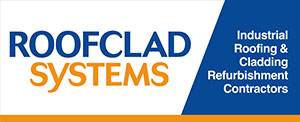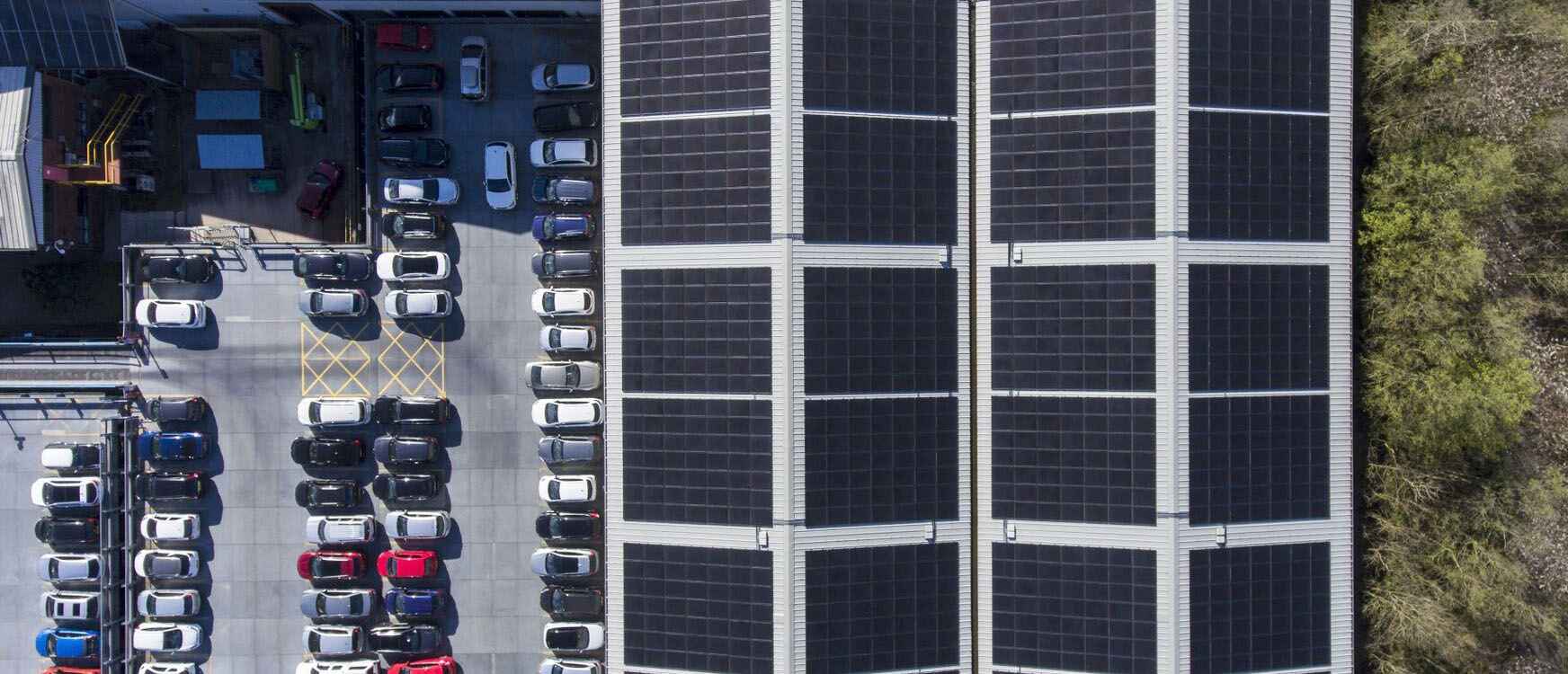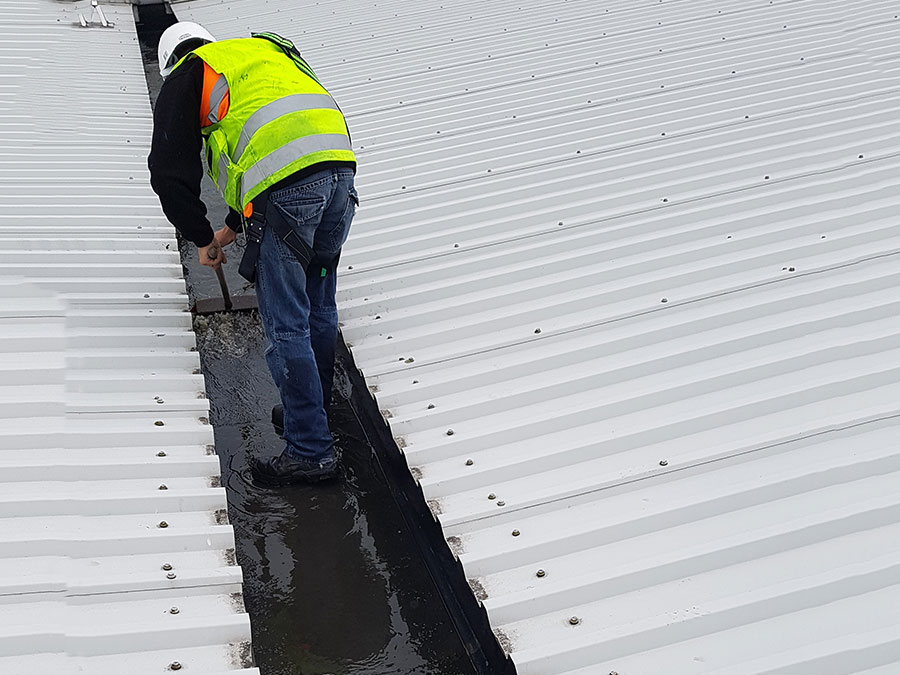Having a leaking roof is a headache for anyone, especially a commercial business owner. If the problem is not addressed quickly, it can lead to a number of issues. One being more money out of your pocket! In order to save you time and money, we’ve put together a list of the most common reasons why your commercial roof is leaking and what to do about it.
Signs of a leaking commercial roof
Before we get into the reasons why your commercial roof is leaking, you need to know the signs of roof leak. The most common signs include
-
- Stained walls or ceilings – Discoloured areas on your ceiling or roof. Often a light brown colour.
- Water dripping – Dripping of water internally from your roof or ceiling.
- Strong odour or signs of mould – Mould on your ceilings or walls. Mould will thrive in moist environments.
Common causes of commercial roof leaks
1. Poorly maintained
Commercial roof’s need to be properly maintained in order to extend their lifespan. A poorly maintained roof will inevitably lead to leaks. There are some things that are out of your control. Winter can bring uncontrollable weather conditions, heavy rain, thick snow and harsh winds. All of which can have an impact on your roof. Running the risk of roof leaks.
Solution
It’s incredibly important to have a roof maintenance plan in place. Unsure on where to start? Speak to the company that installed your roof. Any professional commercial flat roofing contractor should give you tips and advice on how to maintain your commercial roofing.
2. Build-up of water
Standing water is a commercial roof’s worst enemy. It’s probably one of the most common reasons why commercial roofs leak. Standing water and its additional weight can lead to sagging in the roof. It can also lead to a growth in plants and moss, as well as the roof deteriorating a lot faster. All inevitably resulting in roof leaks.
Solution
There are a number of reasons why a commercial flat roof may suffer from standing water. Including:
- A poorly designed roof – This isn’t due to a fault of your own. A poorly designed roof can lead to an array of issues, including leaks. This is why it’s incredibly important that you hire experienced roofing contractors.
- Lack of drainage – Again, this isn’t really a fault of your own. This could be down to the roofing company not installing sufficient drainage points or an unusual and continuous amount of rainfall. It may be worth installing additional drainage outlets to rectify this.
- Blocked drainage – This is more than likely due to poor roof maintenance. It’s common to have a build-up of debris on flat roofs. Which may lead to blocked drainage and increased levels of standing water. Both of these are likely to increase the chances of leaks. It is definitely worthwhile investing in a professional maintenance package to prevent this.
You may need to install additional rainwater outlets in order to counteract this.
3. Ageing roof
Unfortunately, commercial flat roofs don’t last forever. The average lifespan of a flat roof is anything between 15 and 20 years. The lifespan of your roof will depend on the materials used, the quality of installation, how well it is maintained and a number of environmental factors.
From an economical standpoint, it may make more sense to completely refurbish the roof, rather than constantly trying to patch it up. Check out our guide ‘Repair Or Replace: How To Spot The Signs’ to learn more about whether or not you need to carry out a roof repair to refurbish your commercial roof to better prevent a roof leak.
4. Damaged roof flashings
Roof flashings are the pieces of metal used around conjoining areas of the roof. They are commonly found in areas such as roof edges and skylights. Flashing, similar to the other materials on your roof, is susceptible to wear and tear and ageing, which can lead to leaks.
Poorly installed flashing can also lead to leaks on your commercial roof. Always make sure you’re dealing with an experienced roofing company!
Solution
It’s important to repair damaged flashing. Regular maintenance of your roof and its flashing can minimise leakage down the road.
5. Vulnerable areas
There are a number of vulnerable areas on a commercial roof, that if not properly sealed and maintained, are susceptible to leakage. These include:
- HVAC units
- Vents
- Piping
- Roof lights
- Gas lines
All of these puncture the membrane of the roofing system and if not correctly installed and sealed can lead to significant damage to your roofing system and your building interior.
Solution
Make sure you work with a reputable roofing contractor. All of these areas are susceptible to leaks. It’s incredibly important that they are installed properly and kept watertight. This can be done by flashing, rain collars and pitch pans.
6. Damaged membrane
Roof membranes are a waterproof layer applied to roof’s to prevent leakage. Especially single-ply roofing systems. Roof membranes can become damaged due to high levels of foot traffic, weather conditions or mechanical damage.
Solution
Try to minimise unnecessary foot traffic on your roof, invest in a regular maintenance plan and address the issue as soon as possible. Sometimes it can be a quick patch up of the area, or if not addressed properly, can lead to the complete replacement of the membrane. Which can be costly!
7. Poor design and installation
A poorly designed roof can often lead to rainwater not draining effectively. Leading to standing water and leaks. This is normally down to a lack of pitch or a minimal number of drainage outlets installed.
Solution
Hire a roofing company that knows what they’re doing. Always do your research and don’t be afraid to ask questions.
No matter what the reason is for your commercial roof leak, you need to be proactive with your roof maintenance and repairs. Do your research and ask questions. Poorly designed commercial roofing will lead to a number of issues and will hit you hard financially in the long run.


